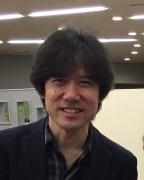Research Experience
-
2018.04-Now
The University of Tokyo
-
2008.04-2018.03
Waseda University Faculty of Science and Engineering
-
2007.04-2008.03
Waseda University Faculty of Science and Engineering
-
2004.09-2007.03
Waseda University Faculty of Science and Engineering
-
2003.04-2004.08
Waseda University School of Science and Engineering
-
1997.06-2003.03
理化学研究所 研究員
-
1997.04-1997.05
National Institutes of Health
-
1996.04-1997.03
National Institutes of Health
-
1995.06-1996.03
National Institutes of Health
-
1995.04-1995.05
理化学研究所 奨励研究員

